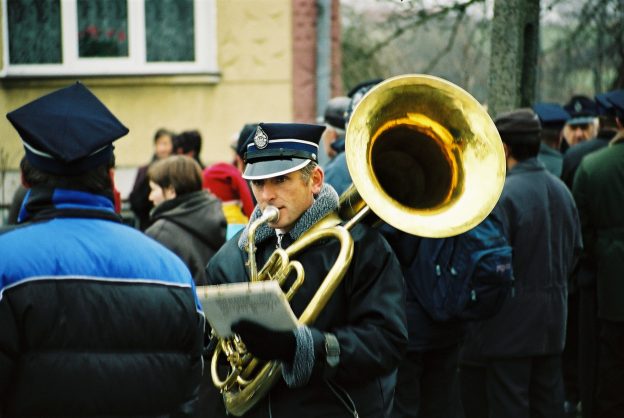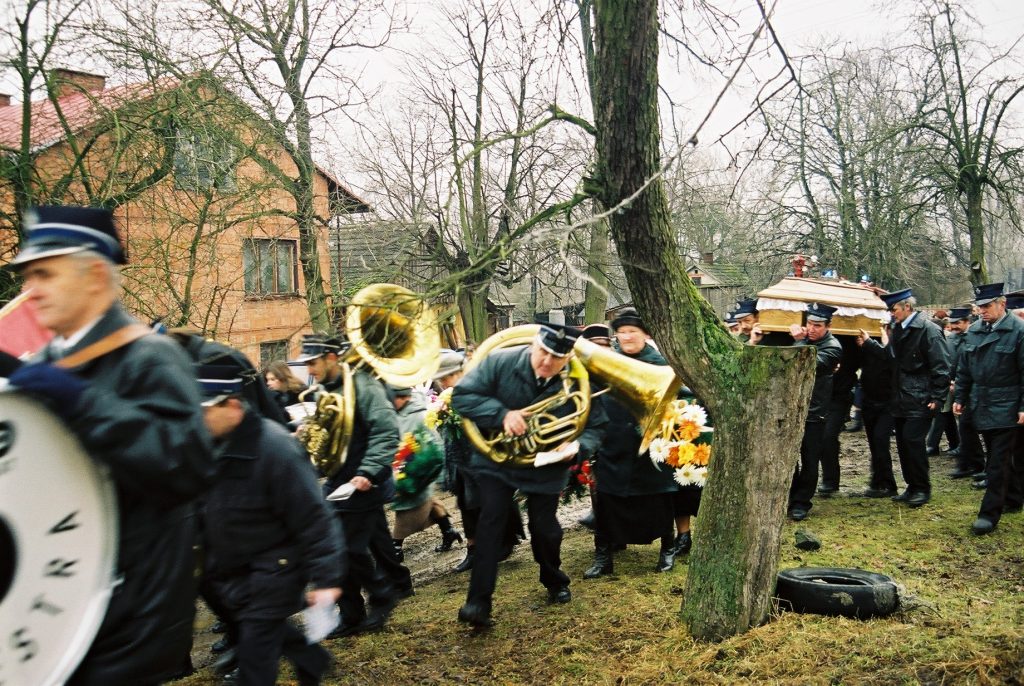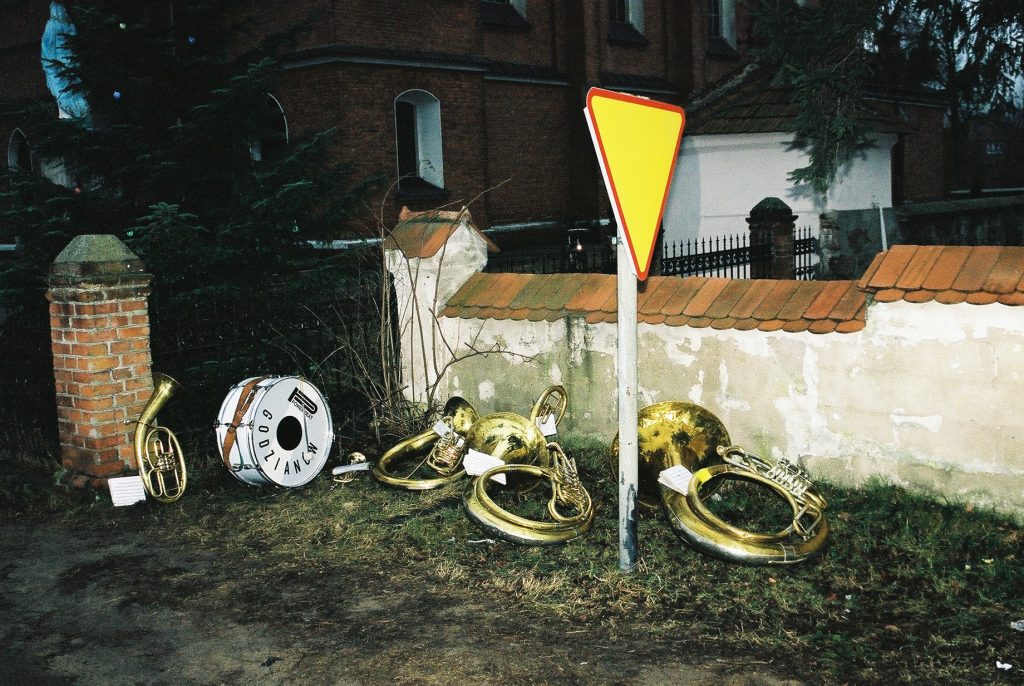Maciej Kierzkowski, PhD Candidate, Music
My initial interest in brass bands was sparked randomly while collecting materials to research the past of my family. I learned that my grandfather’s brother was buried without a priest, and that during his secular funeral a glassworks brass band from a nearby village performed the ceremonial functions. As well as throwing light upon my family’s history, this information made me realize the importance of the brass band in contemporary Polish culture. The main question that appeared in my mind was, how did the funeral of my ancestor look (and sound), and what particular role did the brass band play in it? The opportunity to address this question appeared soon (in 2003) while conducting research for my Masters’ thesis on the brass bands of the Mazovia region in central Poland.
This blog entry presents the original field recording of the funeral that was made in situ in Godzianów village in Mazovia region in Central Poland. It was performed by Orkiestra Dęta OSP Godzianów (the Godzianow Voluntary Fireman Brigade Brass Band), and the deceased was one of its former bandsmen. The following is translated from my original field-work notes as an outsider [click the player below to follow along with the recording – numbers in brackets refer to timings in the recording]:
[00’00] ‘Before starting the funeral ceremony, members of the band and other participants of the ritual gather in the yard in front of the house of the deceased. Musicians dressed in fireman uniforms come to the site in fire trucks. Another truck brings in other firemen that are not musicians. The instrumental configuration of the band includes: 1 clarinet in Bb, 3 alto saxophones in Eb, 2 tenor saxophones in Bb, 1 trumpet in Bb, 1 bass saxhorn in Eb, 1 baritone saxhorn in Bb,1 tenor saxhorn in Bb,1 bass drum.
[00’50] The first musical piece performed by the band is a funeral march that is played during the elevation of the coffin from the house of the deceased. At that time, alarm sirens and emergency lights of fire trucks are activated.
[02’40] The funeral procession is being formed and then it goes from the house of the deceased to the local church. At the head of the funeral procession is a fire truck with a coffin. Behind the car marches fireman carrying a cross, then comes the band with a bandmaster conducting with a baton in front. The conductor lifts the baton to the right and counts the first beat on his left step. In accordance with this principle the entire brass band follows the same step. During the parade, the band performs several funeral marches that are two- and three-part music compositions, mostly kept in minor keys. The drum beats the rhythm of the steps of the funeral procession in between the music performances of the full band. While the funeral procession passes by the fire station the alarm sirens in the building are heard.
[35’55] After reaching the church, the funeral mass begins in the church and the band stays outside in front of the church having a break. The church bells are heard.
[37’31] After the mass, the funeral procession is formed again and marches to the nearby cemetery. The brass band performs two marches divided by the beats played on the drum that sets the tempo of the procession.
[44’01] At the cemetery the mourners sing the religious song accapella with the priest celebrating the ceremony.
[44’32] The brass band performs funeral march during the putting down the coffin into the grave, while the fireman trucks activate their sirens. When the sirens stops the band perform the final march that ends in the major key. Finally the bandsmen leave the cemetery without forming the procession.
This ethnographic material illustrates the living tradition relevant both to the fireman culture that has been widespread in Poland since the second half of the nineteenth century, and the rite of the Roman Catholic Church that is the biggest religious community in Poland. The focus on sound gives rare opportunity to experience the temporal aspect of the funeral ritual, its relation to local soundscape and space, and the music that seems to blow the spirit of the former bandsman to another and rather unknown dimension.



